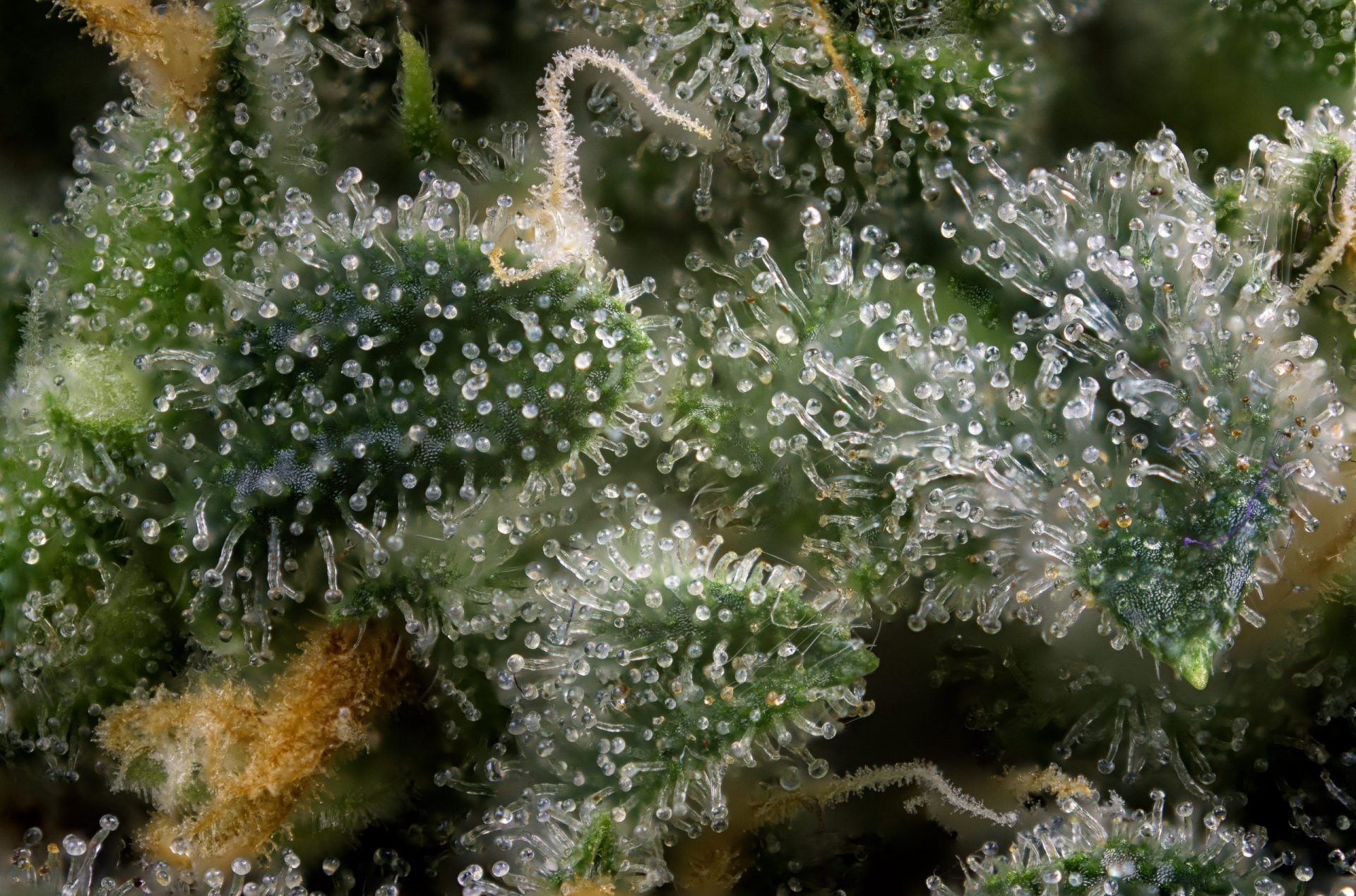Trichome (trich): a small hair or other outgrowth from the epidermis of a plant, typically unicellular and glandular.
That’s the official definition of the sticky substance found oozing out of high-grade cannabis. History has shown that people have been using trichomes all the way back to biblical times. Ever heard of the magical “anointing oils” that Jesus used to protect his flock? Well, trichomes and olive oil were responsible for that.
Not just cannabis
The mighty and tiny trichome is king when it comes to the modern cannabis industry. These tiny, glassy, mushroom shaped protrusions rise up from the leaves, buds, and even stems of the cannabis plant. Cannabis isn’t the only plant species that produces trichomes though. Basically, all plant life has some form of trichomes on their surfaces. Take the popular herb rosemary for instance. Ever wonder why a rosemary plant reminds you of the winter holiday season? It’s due to their unique trichomes. Rosemary secretes trichomes full of the terpene alpha pinene to get that beautiful aroma, you guessed it, pine trees. All right, back to the trichomes that we all love…
Growers know
Trichomes from cannabis don’t just contain flavonoids such as terpenes, they also carry most of the medicinal qualities of the plant including the famed cannabinoids THC and CBD. When growing cannabis, quality growers use trichomes as an indicator of ripeness. As trichs (trikes) mature to peak ripeness, they go through a few visual transformations. Using a microscope, jeweler’s loupe, or a simple clip on magnifying cell phone accessory, a grower can precisely determine the optimum ripeness of a cannabis plant. When looking at the magnified image of a trichome, it appears to be made if glass. Standing up like a crystalline mushroom, they slowly change from completely clear, then to a milky looking appearance, and finally to a clear amber color reminiscent of petrified tree sap you’d see in a piece of jewelry at a craft fair.
Timing is everything
Trichomes ripen at different rates from one another and will never be completely uniform in color. There are constant debates between growers as to what is the best time to harvest. Some growers like to harvest when most of the trichomes are milky with a small percentage of amber present. Some like the trichs when they are mostly amber. That is up to personal preference, and of course the strain you are working with. However, it has been shown that when harvesting a bit early, the plant will express a more “heady” effect and letting the trichs ripen up a bit more will have a heavier “body” buzz. That is just a general rule and can have various outcomes with different strains of cannabis.
Quality cannabis will appear to be coated in sugar when cast with light. Turning a bud of good quality cannabis under bright lights will show you the amazing formation of thousands of individual little resin glands that coat the surface of the plant. But it doesn’t end there. Trichomes are trapped within the plants tissues too.
Over the years, science has shown that we can extract these resin glands fairly easily. Not all processes are created equal though. Safety and health have to be the main goal when extracting trichomes. Improper extracting processes can be harmful to your health, so do your research when choosing extracted products. Make sure the products you consume are lab tested for purity, solvent free, and come from a reputable source.
Trichome extraction
The distillate/concentrate we get from the dispensaries here in Florida is all derived from a trichome extraction process. Lab technicians at cannabis companies and independent growers use multiple ways to extract these lovely resin glands.
Some of the processes used to extract trichomes from the plant matter are pretty high tech. They include butane extraction (BHO), super critical Co2 extraction and ethanol (alcohol) extraction. But there are lo-tech, non-volatile ways to complete this process too. Some people like to use dry ice or regular ice mixed with water to literally freeze the resin glands off the plant and filter the material through fine silk mesh screens to catch their bounty. It’s like panning for gold!
It all comes down to the product that you like most. Trichome extraction is becoming a whole other sub industry that has taking the cannabis industry by storm. As technology advances and legalization becomes a reality, the “mighty and tiny trichome” is becoming the big dog in the neighborhood.





